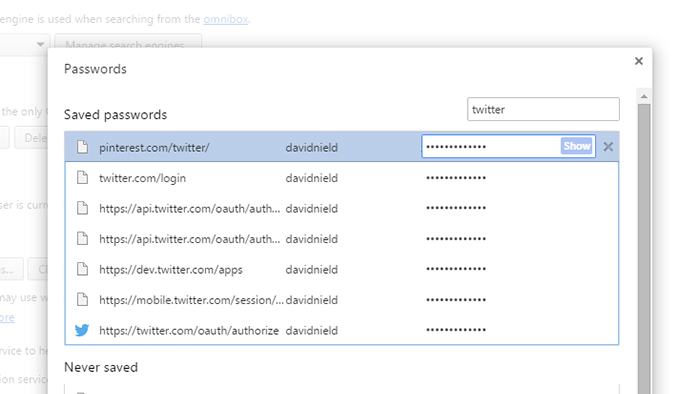Have you ever forget a password of any of your account? Then what is your instant step to get the password? In a hurry you will just click on forget password…where you need to change your password again and again and get confused with the number of passwords. Instead, Hold up for a second before you click that ‘Forgot password?’ There are few chances where your browser may save your passwords in its memory. Move to your browsers cache of details of login if in case you cannot recall your login credentials, or you started using a new device.
If you opened password managing function in the chrome browser, Firefox, Internet Explorer or Safari, then your login details must naturally show up when you visit the website once more. There are reasons why this won’t not happen however: If you’ve switched browsers, got out your treats, signed in from an alternate page or left it two or three years between logins then the information won’t not show up as you anticipate that it will.
A code change on the site’s end can confuse your browser as well, keeping it from serving up the privilege username and password combination when you require it. For these circumstances, in addition to those events when you’re signing in on another PC or cell phone, you can dive into your browser’s memory instead of experiencing a boring reset process.
Here’s the way to do it, accepting obviously your browser’s secret key option has been empowered in any case.
- Chrome
In Google Chrome,
step 1: Open the Settings option from the main menu and click on show advanced settings.
step 2: Now, click on Manage passwords that show up a list. If you get lot of entries in the list appeared, you can use search box to look for the URL which you want to know.
step 3: You can then tap on a section and select Show to see the password—Chrome will incite you for the username connected with your Windows or Mac record to demonstrate you are who you say you are before showing the password. You get options to copy the password, edit the password.
2. Firefox
In Firefox to open you’re saved passwords,
step 1: Open “options” then Options from the menu.
Step 2: Switch to Security and click the button stamped Saved Passwords to raise the database. Once more, you can search down sections or essentially look down the list.
step 3: Click Show Passwords to uncover your login data. Anybody you can take a seat at your PC can experience the same procedure, which is another justifiable reason motivation to ensure your OS client account with a password. You get options to copy the password, edit the password.
3. Internet Explorer
step 1: You have to move to open for Control Panel, and then search down “Credential Manager”
step 2: Click Manage Web Credentials when the outcomes show up on screen.
step 3: Expand entry of the site you need to take a look at and pick Show beside the featured out password. You’ll be provoked for your Windows client account password as an additional level of security, and if that you can demonstrate your personality then the password will be shown on screen.
4. Safari
At last, Apple’s browser.
step 1:From the Safari menu choose the Preferences and open up the Passwords tab.
step 2: You can look down through the sections in the list or utilize the search box to discover something particular.
step 3: Click the box checked Show passwords for chose sites, enter your Mac OS client account password, and the points of interest for the as of now chose site show up on screen. That need to give you all that you have to sign into the site or application you’re utilizing.











